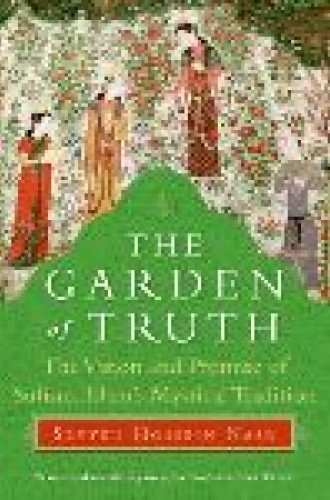Sitting with Sufis/ The Garden of Truth
Sufism, the mystical path within Islam, like other inner traditions such as Yoga and Kabbalah, has both an element of philosophical esotericism and a dimension of practice that can more easily be popularized. The two books under review engage Sufism from very different perspectives. Seyyed Hossein Nasr is an Iranian-American emeritus professor of Islamic studies and author of numerous books on Islam and especially Islamic mysticism. He is the recipient of prestigious awards in religious studies and has delivered the Gifford Lectures. Mary Blye Howe is an American Christian who approaches “interspirituality” through encounters with other religious traditions at the level of embodied practice. She also is the author of A Baptist Among the Jews.
Howe approaches Islamic mysticism primarily through the teachings of Sherif Baba, a Turkish Rifa’i-Marufi Sufi who until recently resided in North Carolina, and through representatives of the New Age, eclectic Sufism of Inayat Khan, the Indian Sufi who brought Sufi teachings to the West in 1910. In some streams of universal Sufism, Islamic law (Shari‘a) and exoteric Muslim identity are not part of the teaching, which features instead a pastiche of chants, practices and movements derived from classical Sufi teachings and poetry, other world religions and third-wave humanistic psychology. Howe is attracted by the openness and the absence of need for specific religious affiliation in this version of Sufism. She also samples elements of Turkish Muslim culture through her contacts with Sherif Baba’s disciples and on a pilgrimage she makes with the group to Turkey.
Howe’s style is simple and personal, as if she is sharing her diaries of dreams, meditations and experiences on the path in order to explain Sufi concepts. These include love, goodness, the remembrance of God and the need for a teacher—but even more, the importance of absorbing and accepting what one already knows.
Nasr’s presentation of Sufism draws on the more sober and intellectual path of gnostic esotericism. Knowledge is first, love second. One can achieve self-knowledge only by following a specific religious tradition, according to Nasr, who aims to communicate some of the historical and doctrinal richness and depth of the Sufi tradition. The non-Muslim non-Sufi reader is informed rather than initiated by Nasr, an adherent of the traditionalist, or perennialist, school of Sufism, which has its own specific interpretation of the heart of Sufism.
In dense yet clearly written chapters Nasr intersperses a discussion of Sufi theology and metaphysics with passages from the Qur’an and citations from Sufi poets such as Rumi, often referring to Christian teachings to illuminate points he is making regarding mystical Islam. A 70-page appendix reviews the history of Sufism in various regions and introduces major Sufi figures and their contributions.
Whereas Howe plunges into Sufism, Nasr claims the mantle of authority but does not claim to proffer experience; his work suggests layers of historical, cultural and doctrinal complexity that may be appreciated but only vicariously sampled from the outside. Howe offers a more direct route to ecstasy through the heart, with no hierarchy and no barriers to outsiders, females or non-Muslims. Both authors discuss remembrance (dhikr), love, goodness and the names of God, suggesting that these themes are central to Sufi teaching and practice. Readers can decide which author they would like to be their guide on the Sufi path.







